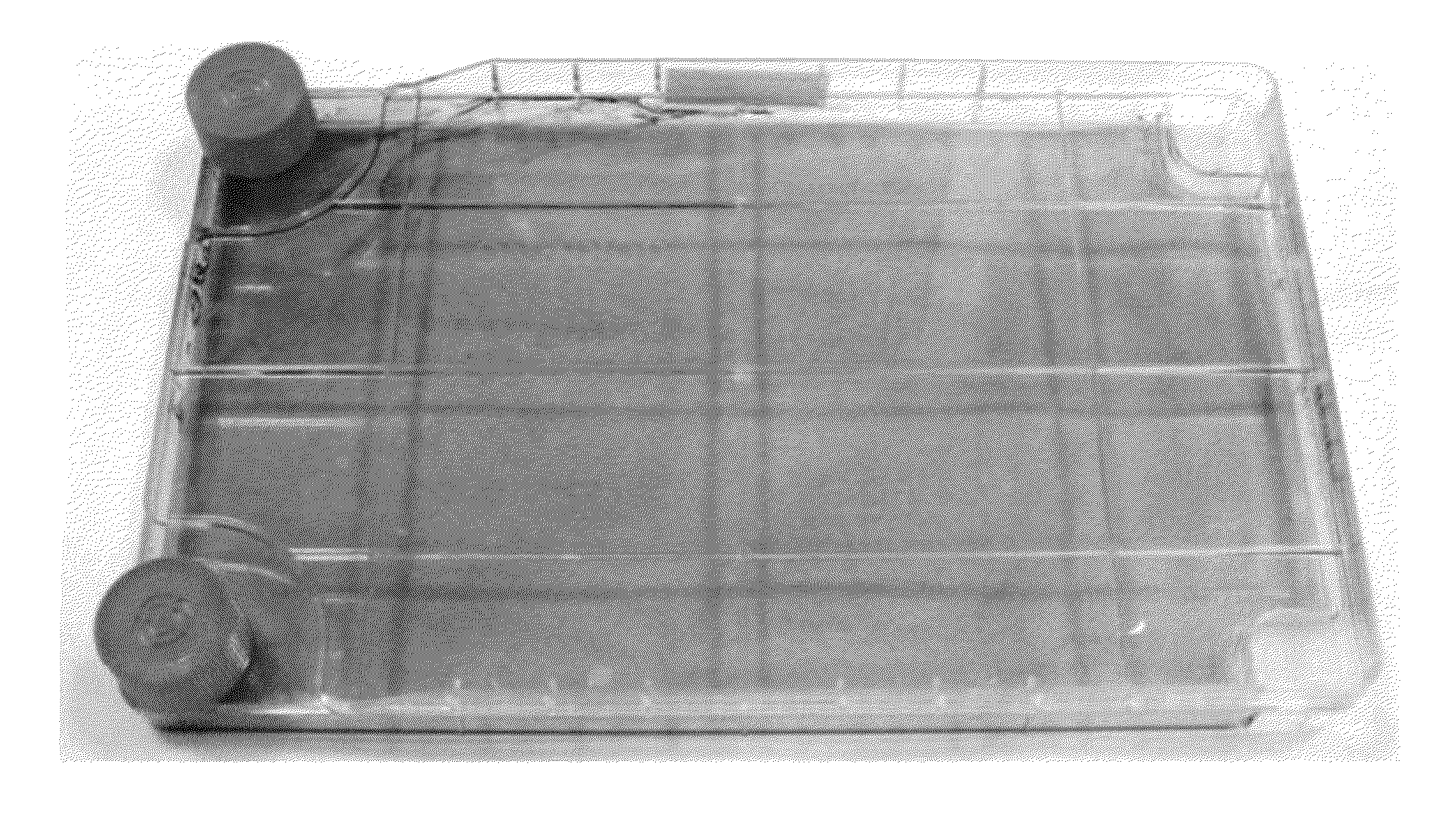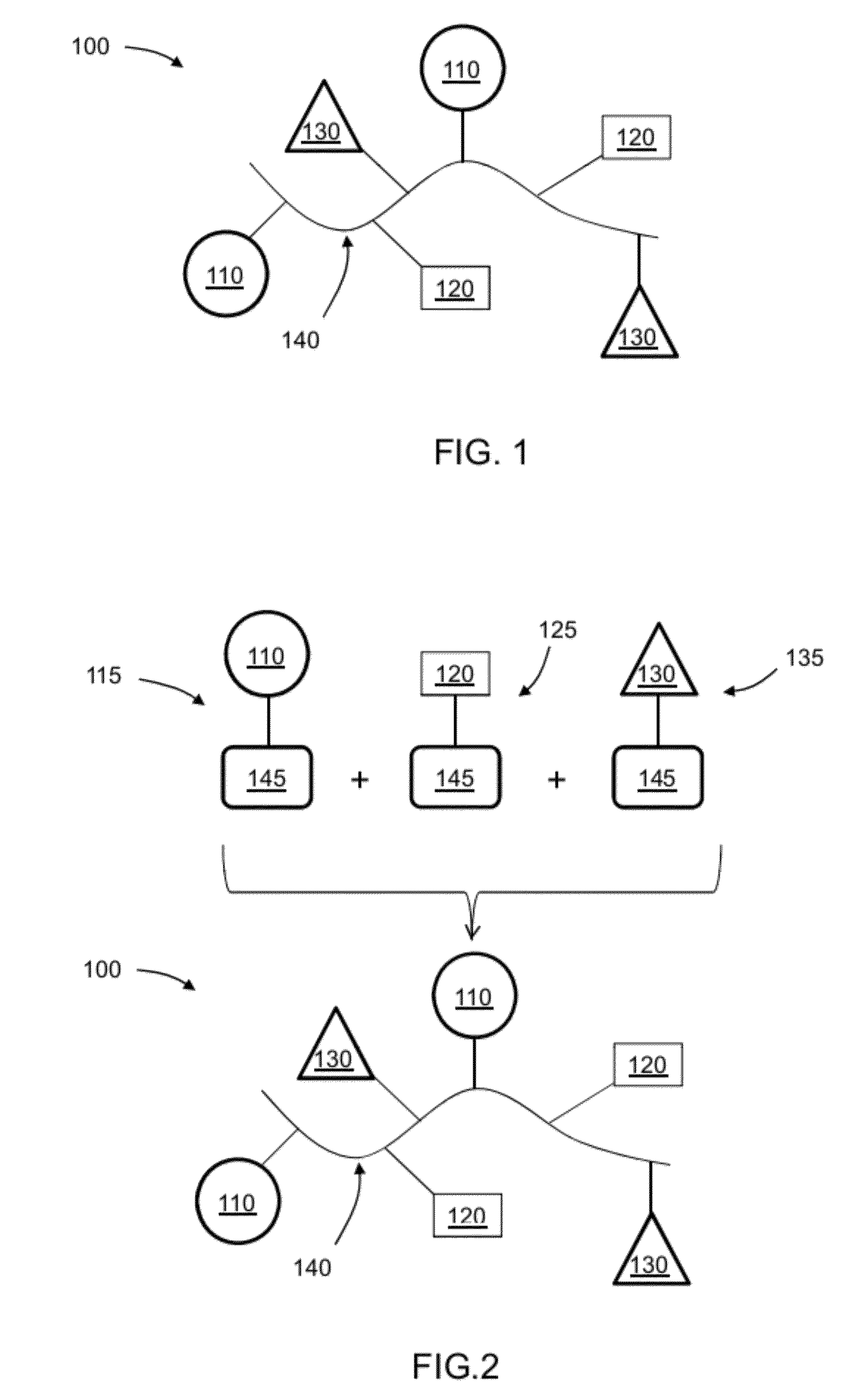Synthetic composition and coating for cell culture
a technology of composition and cell culture, applied in the field of cell culture, can solve the problems of compromising the general culture and maintenance of hescs, affecting the growth of hescs, and affecting the development of such hesc-based treatments, so as to facilitate cell harvesting, reduce shelf life and risk of exposure, and reduce the effect of toxicity
- Summary
- Abstract
- Description
- Claims
- Application Information
AI Technical Summary
Benefits of technology
Problems solved by technology
Method used
Image
Examples
example 1
Preparation of Component (i): Photo-Reactive Hydrogel Forming Copolymer (Photo-DMAE)
Step a: Synthesis of 4-benzoylbenzoyl chloride
[0157]Briefly, five grams of 4 benzoyl benzoic acid was placed in a 100 ml round bottom flask to which thionyl chloride (15 ml) was added. The resulting suspension was heated to reflux for one hour, during which time all solids were dissolved. Volatile compounds were removed by rotary evaporation. The residue was dissolved in toluene and again evaporated. This was done two times in order to remove all thionyl chloride. The crude compound can be purified further by re-crystallization from petroleum ether (Attention the solubility is about 1 g per 100 ml). The product is a white powder, Mp. 95° C. (Lit: 98-99° C.). The 1H-NMR corresponds to the literature data. 1H NMR (400 MHz, CDCl3) δ 8.20 (d, J=7.5, 2H), 7.86 (d, J=7.4, 2H), 7.78 (d, J=7.4, 2H), 7.61 (d, J=6.7, 1H), 7.49 (t, J=7.4, 2H) ppm. 13C NMR (101 MHz, CDCl3) δ 195.31, 167.85, 143.27, 136.36, 135.7...
example 2
Synthesis of Component (ii): poly (HEMA-co-MAA-PEG4-VN)
Step A: Synthesis of (MAA-PEG4-VN)
[0161]The VN peptide (KGGPQVTRGDVFTMP SEQ ID NO:27) was synthesized and provided by American Peptide, Sunnyvale, Calif. by the following process.
[0162]MAA-PEO4-Lys-Gly-Gly-Pro-Gln-Val-Thr-Arg-Gly-Asp-Val-Phe-Thr-Met-Pro-NH2 (SEQ ID NO:27): The peptide was synthesized on 1 mmol Fmoc-Rink Amide resin via Fmoc chemistry. Protecting groups used for amino acids were: t-Butyl group for and Asp and Thr, Trt group for Gln, Pbf for Arg, Boc for Lys. Fmoc protected amino acids were purchased from EMD Biosciences; Fmoc-PEG4-OH was purchased from Quanta Biodesign. Reagents for coupling and cleavage were purchased from Aldrich. Solvents were purchased from Fisher Scientific. The peptide chain was assembled on resin by repetitive removal of the Fmoc protecting group and coupling of protected amino acid. HBTU and HOBt were used as coupling reagents and NMM was used as base. 20% piperidine in DMF was used as de...
example 3
Coating of 6-Well Plates
[0166]A coating formulation was prepared by blending 40 wt % Photo-DMAE as component (i) and 60 wt % poly (HEMA-co-VNPEGMAA) as component (ii) at 1 mg / ml total solid contents in trifluoroethanol (TFE) available from Sigma Aldrich.
[0167]Tissue Culture Treated (TCT) polystyrene (PS) 6-well plates (Corning Incorporated) were used. 40 μl / well were dispensed (by hand using ¼-inch hole-template lid). The lid was replaced immediately hole-template lid by cover-plate. The formulation was allowed to spread to the edge with cover-plate in place for 5 to 8 min Plates were allowed to dry by replacing the cover plate with filter paper 15 min at 40° C. (or vacuum drying) UV curing was done with a “D” bulb, 80% power, 0.6 m / min belt speed, 1 pass, plate are exposed upside-down with the lid in place to avoid contamination by dusts (the bottom plate plays the role of UV filter protecting peptide owing to the its intrinsic adsorption of wavelengths <300 nm). Plates were washed...
PUM
| Property | Measurement | Unit |
|---|---|---|
| pH | aaaaa | aaaaa |
| molar ratio | aaaaa | aaaaa |
| molar ratio | aaaaa | aaaaa |
Abstract
Description
Claims
Application Information
 Login to View More
Login to View More - R&D
- Intellectual Property
- Life Sciences
- Materials
- Tech Scout
- Unparalleled Data Quality
- Higher Quality Content
- 60% Fewer Hallucinations
Browse by: Latest US Patents, China's latest patents, Technical Efficacy Thesaurus, Application Domain, Technology Topic, Popular Technical Reports.
© 2025 PatSnap. All rights reserved.Legal|Privacy policy|Modern Slavery Act Transparency Statement|Sitemap|About US| Contact US: help@patsnap.com



